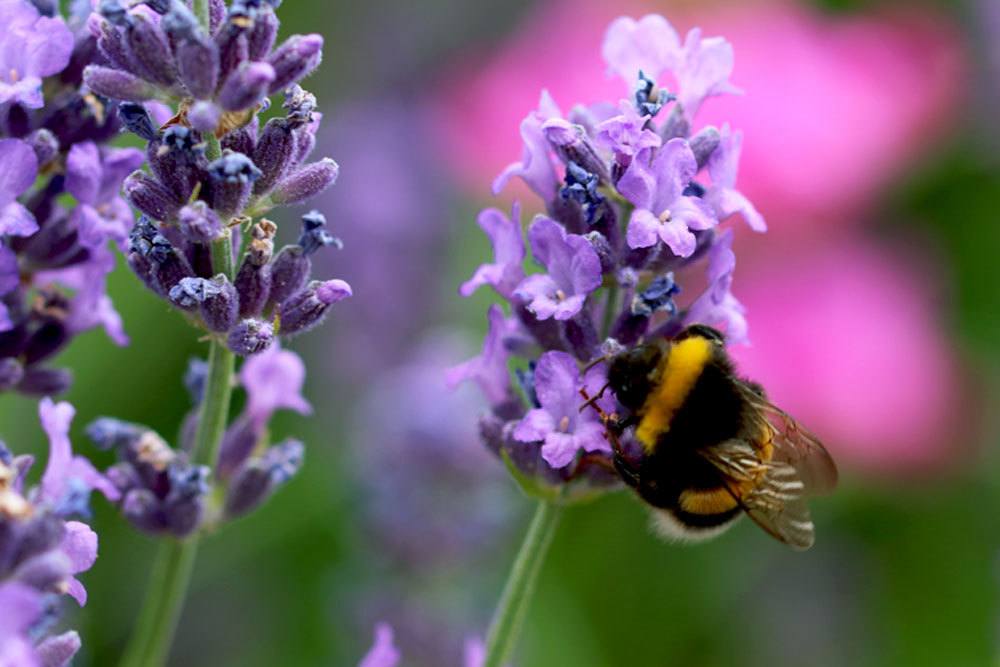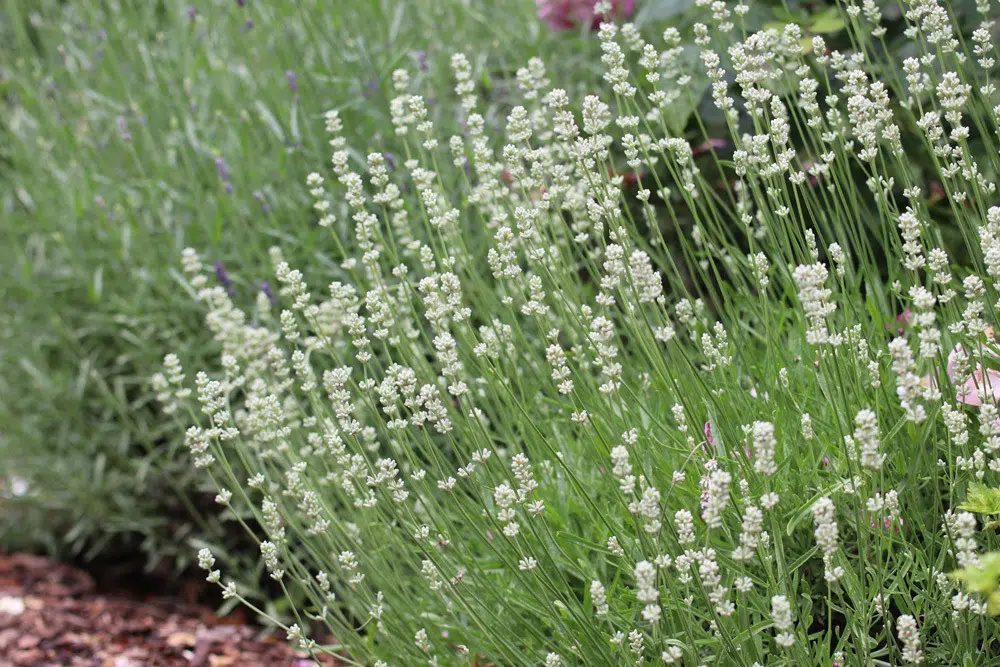Lavender is considered by many amateur gardeners to be an almost sure thing in terms of flowering and robustness. It is not for nothing that this friend of all bees and bumblebees adorns numerous front gardens and planting beds. Nevertheless, Lavandula angustifolia gets problems again and again and dies. We explain why and what you can do about it.
Contents
Common causes and remedial measures
Of course, not every single problematic lavender can be saved by means of the following measures. Because again and again very individual reasons strike to book, which can be fathomed then unfortunately also only in the context of an equally individual cause research. However, the most frequent causes occur again and again, so that at least the most frequent sources of error can be found and eliminated on the basis of the following list.
Wetness and humidity
If your lavender leaves droop and at the same time turn increasingly brown from the bottom to the top, moisture is the most obvious cause. To be precise, it dies because the roots cannot cope with the excess of available water and are attacked by rotting bacteria.
Remedy
- Remove plant from pot or soil
- Cut off rotting root areas
In the field, replace the immediate root area; in the plant pot, replace the soil completely, ensuring that the drainage holes in the pot are functioning properly (place a piece of clay on top, etc.).
Replace lavender plant and water only moderately.
Note: If rotting roots are pruned, do not damage the central taproot of the lavender. If it is damaged, the probability of still saving the plant decreases significantly.

Note: Although a plant that dries out is often thought to be lacking in water, this is very rarely the case with lavender in our latitudes. The plant actually originates from southern regions and is adapted to barren soil with very low water storage capacities.
Lack of space
If Lavandula Angustifolia is slowly but steadily withering away, lack of space could be a reason. This is not so much the space for the above-ground parts of the plant, i.e. branches and flowers, but rather the space available for the root system. If the plant runs out of development possibilities here, this also affects the visible parts. Growth stops and the leaves and later also twigs turn brown and die.
Remedy
- Repot the plant in a larger planting container
- In the open ground, choose location without direct interference from borders or poor subsoil
- Ensure sufficient depth for taproots
Note: Especially with beds or plant pots that are too shallow, too much water is often stored without being able to drain away. Therefore, in these cases, stunting is often accompanied by the symptoms of excessive moisture already described.
Over-fertilization
Lavender is a very frugal plant that usually even manages without any additional nutrient applications. When kept in combination with more voracious growers, such as roses, too much fertilizer can ultimately be a death sentence. Especially with nitrogen, over-fertilization can initially cause the plant to develop tremendously in a short period of time. Here, gardeners refer to it as “going into overdrive.” However, after two to three years at the latest, this process reverses and the above-ground plant components first wilt, later turn brown and die.
Remedy
Stop fertilizing
If potted plants are overfertilized, transplant them
In case of bedding, transplant to less fertilized location, alternatively replace soil
Limit joint plantings to less nutrient-intensive partners
Location
Most lavender species prefer a full sun location. If they lack sun, they will lag behind in their development. Extreme lack of light can even cause the plant to wither and eventually die.
Remedy
Relocate to a full-sun location
In the case of potted plants, move the pot, e.g. to a south-facing terrace or balcony.
Note: The most common variety of lavender suitable for partial shade is white lavender. Nevertheless, before purchasing it is recommended to check both the location and the species in terms of its suitability to the site. In case of doubt, the gardener or plant nursery can advise.

Pruning
Lavandula Angustifolia wants to be pruned back for a lush, dense and compact growth. Pruning is best done in the spring and a second in the summer after flowering. If these measures are not taken, the plant will not die completely, but it will increasingly develop missing parts and a thinner and thinner growth. Inexperienced hobby gardeners in particular quickly mistake this for degeneration and a general dying of the plant.
Remedy
- Regular and consistent pruning:
- First pruning in spring
- Second pruning in summer after the end of the flowering period
- Cut back to the young shoots
But: Do not cut into the old wood, otherwise the plant will have to recover, which is very strenuous.
Mulch
Many gardeners tend to generally cover planting beds with bark mulch. This is to protect against excessive drying of the soil. However, lavender does not like the permanently high humidity of the soil at all. Also, the additional acidification of the soil emanating from the bark does not agree with him. The result is poorer development and, in the long run, degeneration to the point of withering and death.
Remedy
- Remove mulch layers
- Ensure good aeration of the soil against moisture and waterlogging.
Diseases and pests
Pests are rarely a threat to a lavender plant. This is because the essential oils it contains are used elsewhere as a pest repellent and, of course, protect the “grower” itself. The most common diseases are molds and rotting bacteria, usually due to excessive soil moisture. The only real disease that is always encountered is the fungus “Phoma Lavendula”. Once infected, the shoots develop brown, later black spots. If left unchecked, the fungus spreads and attacks large parts of the plant. Whole shoots dry up and die.
Remedy
- Remove infested shoots
- In case of intensive infestation use fungicidal agents

